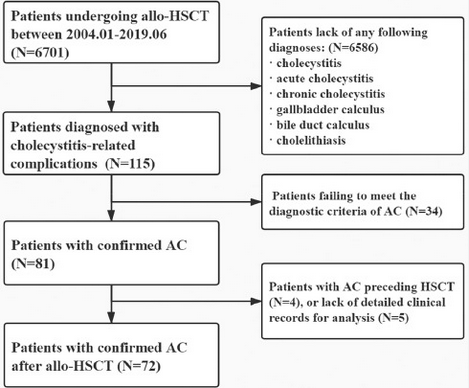A Study of Clinico Epidemiological Profile of Diagnosed Cases of Acute Cholecystitis
Main Article Content
Abstract
Background: Diagnosis of acute cholecystitis is primarily made on of clinical features and then confirmed by ultrasound scanning. First line treatments include fasting, intravenous fluids, and analgesia. Very ill patients or those unfit to undergo surgery, percutaneous cholecystostomy is a safe alternative to cholecystectomy.
Aim and Objective: the study is to assess the socio-demographic and clinical profile of acute cholecystitis cases presenting to the Department of Surgery & Emergency at Santosh medical college and hospital, Ghaziabad and to describe the management and complications.
Methodology: The present study is an Observational and Prospective study conducted at Santosh Medical College and Hospital, Ghaziabad (Uttar Pradesh).The study was conducted from November 2018 to April 2020.The study was carried out among adult patients (18 years and above) being referred to the Emergency department and Department of Surgery, Santosh Medical College and Hospital, Ghaziabad (Uttar Pradesh) presenting with Upper Abdominal Pain.
Result: Acute cholecystitis affected the majority of patients (45%) between the ages of 41 and 60. In this study, women made up 72% of participants, compared to men who made up only 28%. Less than 10% of the cases had a family history that would have pointed to gallstone disease. 90% of the remaining cases lacked any evidence of gall stone disease in their families.
Conclusion: Acute cholecystitis is typically brought on by gallstones. For the first-line therapies of fasting, intravenous fluids, and analgesics, patients with acute cholecystitis should be admitted to the hospital right away. Surgery (cholecystectomy) should be performed after the initial course of treatment within 24-48 hours of admission (early). Although open cholecystectomy was used in this study, laparoscopic cholecystectomy is the preferred method and the gold standard. For other researchers to understand the severity of acute cholecystitis in this area of the region, they can use the current work as a benchmark.
Article Details
References
Volg AW, Adam W, Mitchell WM. Grey ́s Atlas of Anatomy, Volume 34; 200
Papilian V. Human Anatomy, Volume 2 Splahnologia, 2006, 12th edition; ALL Publishing House
Borundel C. Internal medicine for middle managers; 2009 ALL Publishing House
Longo DL. Harrison Handbook of Medicine; 2014.
Sarin P. Patologiacailorbiliare. Sindroamebiliare. [Internet]. Accessed on 01/01/2021. Available at: http://anatomie.romedic.ro/patologia-cailor-biliare-sindroame-biliare/
Internal Clinical Guidelines Team (UK). Gallstone Disease: Diagnosis and Management of Cholelithiasis, Cholecystitis and Choledocholithiasis. London; 2014.
Sangma M, Marak F. Clinicoetio pathological studies of acute cholecystitis. Ind J Surg. 2016:914-20.
Everhart JE KM, Hill M, Maurer KR. Prevalence and ethnic differences in gallbladder disease in the United States. Gastroenterology Res. 1999;117:632-9. 4. Ryu JK RK, Kim KH. Clinical features of acute acalculous cholecystitis. J ClinGastroenterol. 2003;36(2):166-9
Sekimoto MTT, Kawarada Y, Nimura Y, Yoshida M, Mayumi T, et al. Need for criteria for the diagnosis and severity assessment of acute cholangitis and cholecystitis: Tokyo Guidelines. J HepatobiliaryPancreat Surg. 2007;14(1):11-4.
Kiriyama STT, Strasberg SM, Solomkin JS, Mayumi T, Pitt HA, Gouma DJ et al. TG 13 guidelines for diagnosis and severity grading of acute cholangitis (with videos). HepatobiliaryPancreat Sci. 2013;20(1):24-3
Tsai CJ, Leitzmann MF, et al. Statin use and the risk of cholecystectomy in women. Gastroenterology. 2009;136(5):1593-1600.
Bodmer M, Brauchli YB, et al. Statin use and risk of gallstone disease followed by cholecystectomy. JAMA. 2009;302(18):2001-2007
Erichsen et al. Long-term statin use and the risk of gallstone disease: A populationbased case-control study. Am J Epidemiol. 2011;173(2):162- 170.
Kumar V, Abbas AK, et al. Robbins basic pathology. 9th ed. Philadelphia, PA: Elsevier/Saunders; 2013:909.
Fagan SP, Awad SS, Rahwan K, et al. Prognostic factors for the development of gangrenous cholecystitis. The American Journal of Surgery. 2003;186(5):481-485
Aydin C, Altaca G, Berber I, et al. Prognostic parameters for the prediction of acute gangrenous cholecystitis. J HepatobiliaryPancreat Surg. 2006;13(2):155- 159.
Sauerbruch T, Paumgartner G. Gallbladder stones: Management. The Lancet. 1991;338(8775):1121-1124
Senapati PSP, Bhattarcharya D, et al. A survey of the timing and approach to the surgical management of cholelithiasis in patients with acute biliary pancreatitis and acute cholecystitis in the UK. Ann R CollSurg Engl. 2003;85:306–12.

